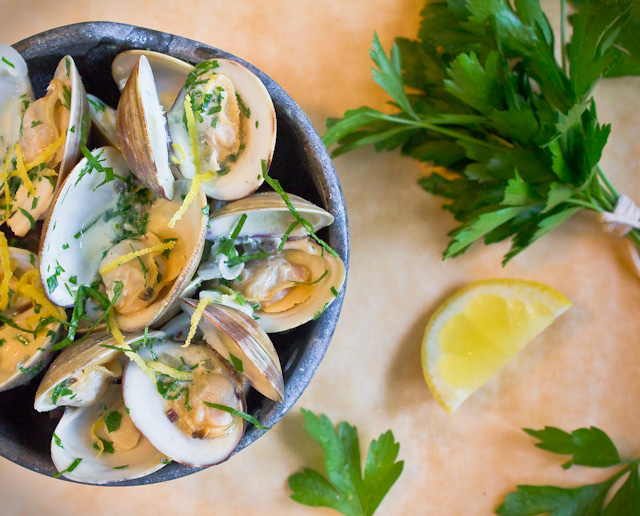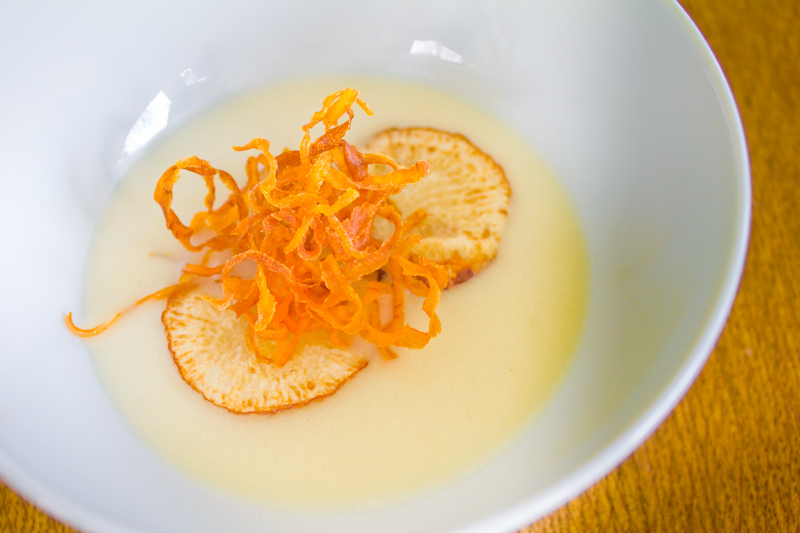 One year and three days ago, at 3:30 in the afternoon on 11/11/11, I was eating lentil soup. I am able to tell you exactly that, as it was the meal I finished just as my water broke for the birth of my son. Truthfully, it was lentil soup followed by a scoop of my husband’s homemade vanilla bean ice cream, topped with a generous drizzle of David Lebovitz’s perfect hot fudge recipe Standing at the edge of the new parent cliff, really having no idea what the next many weeks would hold for us, I had been furiously putting meals away for days and days. I don’t know what I expected, but my level of anxiety was fairly appropriate. And when I get anxious, I cook. When someone is struggling, I cook. When things seem grim and I have no idea what to do, out come the cookbooks. And so for the very expectant weeks prior, I had been cooking and cooking. Our chest freezer in the basement was a culinary tetris, packed tightly with calories to keep us going in the 3ams of the coming weeks. Quart container after quart container of warming stews, gumbos, and soups were obsessively stacked alongside a half dozen bags containing fifty frozen dumplings each, devotedly hauled home from Chinatown in the city. I may have been facing a month without leaving the house or having both hands free at once, but I was not going down on an empty stomach. I didn’t know who I’d be on the other side of all of this, but I knew I’d still demand great food. Lentil soup has been a comfort food staple for me through most of the very varied episodes of my life. Cheap, simple, high in protein, and even vegetarian—for that twenty-year phase I went through—its sum is definitely more than its parts. And this will always be the last thing I cooked as a person who wasn’t someone’s mom. As soon as it gets dark before quitting time and a tiny chill shimmies under the door, I crave this recipe. And eating it again this year, days before I became a person who is the mom of a one year old, I am brought right back to a year ago, or my lunch break room in graduate school, or the kitchen in my first apartment in New York, and also my tiny dark brown dorm fridge. I look at the photo we snapped just before walking out the door to drive to the hospital, and am astounded by how I feel like I don’t even know those people. But it is indeed me, as is the girl hosting her first dinner party in a studio apartment, or the girl with the giant mug in her window seat in college, all recognizing each other by the smells and tastes of the recipes that make up my life’s cookbook. Happy first birthday darling boy.
| ||||||||||||||||||||||
Here is an elegant meal or appetizer, that takes not more than minutes to whip up. Warm, rich and creamy, it is a great recipe to keep in mind for winter holidays. Serve it with crusty bread for soaking up the outrageously good sauce left behind, or serve the whole thing over pasta for a more substantial dish.
| ||||||||||||||||||||||
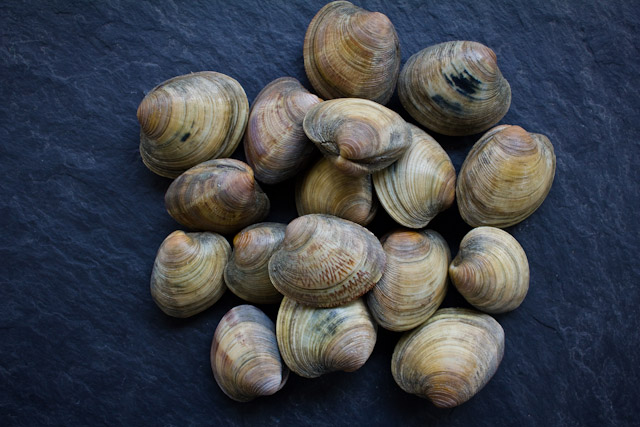 Not just for summer fetes on the beach, clams and other bivalves are a spectacular, and traditional, addition to the holiday table, and perhaps even more importantly, the holiday cocktail hour. A few critical steps can help insure a grit-free mouthful, and will dramatically reduce your chances of getting that one bad clam. Buying Buying the freshest seafood you can get is always the most important place to start, and the best way to help with this is to get to know the people at the seafood counter. If picking them out yourself, look for clams that are not chipped, cracked, or have a damaged shell in anyway. If buying them already bundled, discard any that are broken. Always buy a few more than you need in case of broken shells or clams that don’t open. Storing Store clams in a bowl in the refrigerator covered with a damp cloth. They can keep for a day or two, but the sooner you use them the better for all. Cleaning The day you want to cook them again go through all of the clams and discard any that have a damaged shell. (when in doubt…throw it out.). Scrub the outside of each shell thoroughly to remove any dirt. As you are going through, one by one, if you find a clam that is open, gently tap it on the counter. If it doesn’t close within a minute or two, it is dead and should be thrown out. This is a critical step, as it will look like all the others that have also opened, after they all cook, and yet could potentially make you sick. Any that are dead at the start need to go. Place all of the scrubbed clams in a large bowl, or the sink, and cover with cold water by an inch or two. Allow the clams to sit for twenty minutes in the water. The clams will spit out any grit they have inside their shell. Don’t leave them in the water for much longer than twenty minutes, or they will die. Remove the clams gently, by hand, from the bowl, leaving the dirt and sand behind at the bottom. Pouring them into a colander or scooping them out abruptly could stir up the grit and get it back in the shells. Cook as desired (more on this later this week.). And discard any clams that have not opened during the cooking process.  | ||||||||||||||||
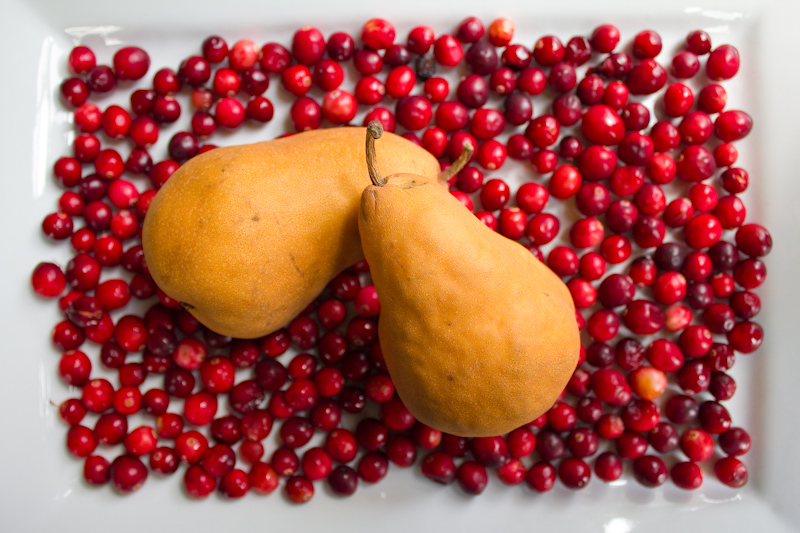 I was recently asked to be a guest blogger for the wonderful heart-healthy food blog What Would Cathy Eat? Cathy asked for a cranberry sauce for thanksgiving, that was less sweet than usual. Here is the post and recipe below, in case you hadn't caught it on her site. --Catie For years, as a child at the 1970’s American thanksgiving table, I too believed that cranberry sauce was always cylindrically shaped, with neatly organized parallel rings encompassing it. That is not to say that my family were not great cooks, slaving for days before over dozens of homemade recipes. However, somehow that little wobbly dish seemed like a required fixture on the holiday table, that someone very well might miss if absent. Though it felt far from “food” and as a result, usually went untouched. It also seemed somewhat sacrilegious to think of smearing that puckeringly sweet jelly on that luscious turkey meat that I had waited an entire year for. How could this red goo possibly improve on roasted perfection? So I took a crack at it myself this year. Drawing on ideas of recipes like Duck with a Sour Cherry Sauce, or a deeply flavored Indian Chutney stirred into a chicken salad, ending up with a condiment that I would actually want to add to my turkey to add to it’s flavor. I eliminated a lot of the sugar found it most recipes (up to a cup of white sugar was common). It’s on the tart end of the spectrum, but balanced, with lovely spice notes that will be beautiful with the richness of the meat. I think it would also be outstanding dolloped on top of a bowl of Greek yogurt for breakfast the next morning, and though not yet tested, I imagine pretty great pureed and used as a base for a holiday prosecco cocktail.
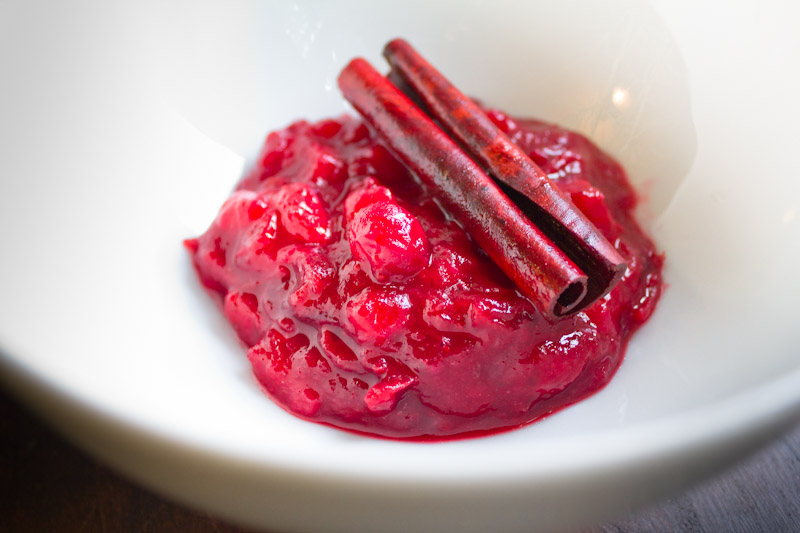 | ||||||||||||||||||||||
|
|
{ welcome! }
 Catie Baumer Schwalb is a chef, food writer and photographer, who splits her life between the city and the country. Not too long ago Catie was a New York City based actress and playwright for more than a decade. She has her Master of Fine Arts from the National Theater Conservatory, and her Grand Diplôme in classic culinary arts from the French Culinary Institute in New York City.
... Read More ≫
Catie Baumer Schwalb is a chef, food writer and photographer, who splits her life between the city and the country. Not too long ago Catie was a New York City based actress and playwright for more than a decade. She has her Master of Fine Arts from the National Theater Conservatory, and her Grand Diplôme in classic culinary arts from the French Culinary Institute in New York City.
... Read More ≫{ get in touch }
{ what's new }
September 12, 2015
August 19, 2013
August 15, 2013
August 13, 2013
August 1, 2013
{ favorites }
{ archives }
Appetizers / Breads & Pastry / Breakfast / Cakes / Canning / Condiments / Dinner / DIY foods / Drinks / Fall / favorites / Grains / Holidays / Local / Noodles & Pasta / Pies & Tarts / Poultry / Salads / Seafood / Snacks / Soup / Spring / Summer / Sweets / Techniques / Vegetables / Vegetarian / Winter /
{ currently reading }
|



